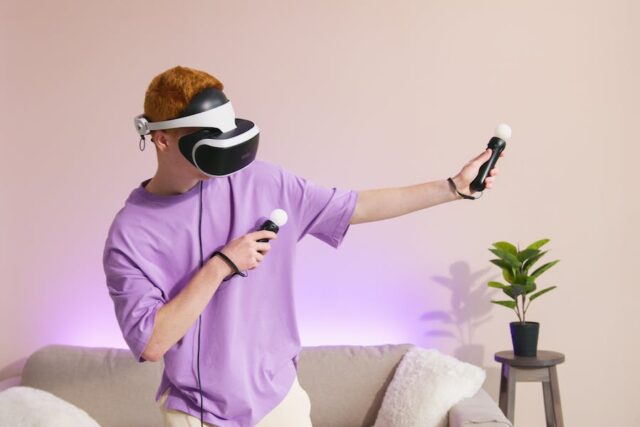In a world increasingly thirsty for mobility, the advent of the stand alone vr headset has revolutionized the way we think about gaming on the go. These self-contained devices, not reliant on external computers or tangled cords, are redefining the gaming landscape, offering a freedom that was previously unimaginable. This shift towards portable virtual reality not only embodies technological innovation but also caters to a lifestyle where flexibility and ease of use are paramount.
Historically, high-end VR required a link to a powerful PC, limiting its accessibility and portability. The introduction of standalone VR headsets has directly overcome this limitation. These headsets, which have built-in CPUs, sensors, and batteries, provide a high-fidelity VR experience anywhere. This improvement has been made feasible by advancements in electronics shrinking and efficiency, which now enable significant computer capabilities to be packed into small, wearable devices.
The advantages of such portability are numerous. Gaming is no longer limited to a specific location; it can be enjoyed anywhere there is enough space to roam about safely. These independent gadgets let users immerse themselves in virtual worlds without the need for external dependencies, whether in a hotel room, a friend’s living room, or a park. This has enabled previously unimaginable spontaneous and social gaming experiences.
Another key advantage of standalone VR headsets is their simplicity of installation. The days of extensive calibration and the arduous task of installing sensors or base stations are long gone. Inside-out tracking is available on modern headsets, which employ cameras and sensors on the device itself to establish the user’s position in space. This feature not only makes the process easier but also improves the user experience by allowing for more dynamic movement within the game.
Furthermore, when compared to their PC-dependent equivalents, the latest standalone VR headsets are closing the performance gap. They enable fluid and responsive gaming that pleases even the most demanding gamers, thanks to specific VR operating systems and optimized processing power. Furthermore, the visual and audio fidelity of these headsets has improved significantly, delivering an immersive experience comparable to more traditional settings.
Another aspect where standalone VR excels is content availability. With an expanding number of developers focused on this platform, there is a growing library of standalone VR-exclusive games and applications. This ecosystem fosters innovation by allowing artists to create experiences that are specifically customized to the platform’s benefits, such as its mobility and user-friendly interface.
Nonetheless, despite its achievements, standalone VR is not without limitations. Battery life is still an issue, as more complicated games require more power. However, advancements in efficient chipsets and power management technologies promise longer play sessions in the future. Furthermore, there is a continuing effort to make these headsets lighter and more comfortable for extended usage, which is critical to the attraction of portable VR.
Furthermore, independent headsets are significantly enhancing the social component of VR gaming. Multiplayer experiences are becoming more accessible, with improved connectivity and the possibility of shared virtual places that do not have time-consuming setups. This democratization of VR gaming is encouraging a more inclusive community in which anyone, regardless of technological expertise or equipment, may hop into a game with friends.
Looking ahead, the potential of standalone VR in industries other than gaming is enormous. This technology will have an impact on educational applications, virtual tourism, and professional training simulations, to name a few. With the ability to recreate complicated scenarios in a safe and controlled setting, standalone VR has the potential to revolutionize a wide range of businesses.
The development of wireless VR also indicates a shift toward more ecologically friendly technologies. By removing the requirement for peripheral devices, electronic waste and the carbon footprint associated with manufacturing and transporting various components are reduced. Furthermore, developments in energy-efficient chipsets are contributing to extended battery life by reducing charging frequency and associated energy usage. More sustainable materials and renewable energy sources are expected to be integrated as technology advances, linking the expansion of VR with environmental responsibility.
In conclusion, the trajectory of standalone VR headsets symbolizes a convergence of technological prowess, environmental awareness, and a commitment to user-centered design. As this technology matures, it has the potential to provide not only a new frontier for gaming and entertainment but also a template for the future of personal computing devices. The new generation of portable VR headsets is more than simply a fad; it represents a huge step toward a more immersive, intuitive, and sustainable digital future.














